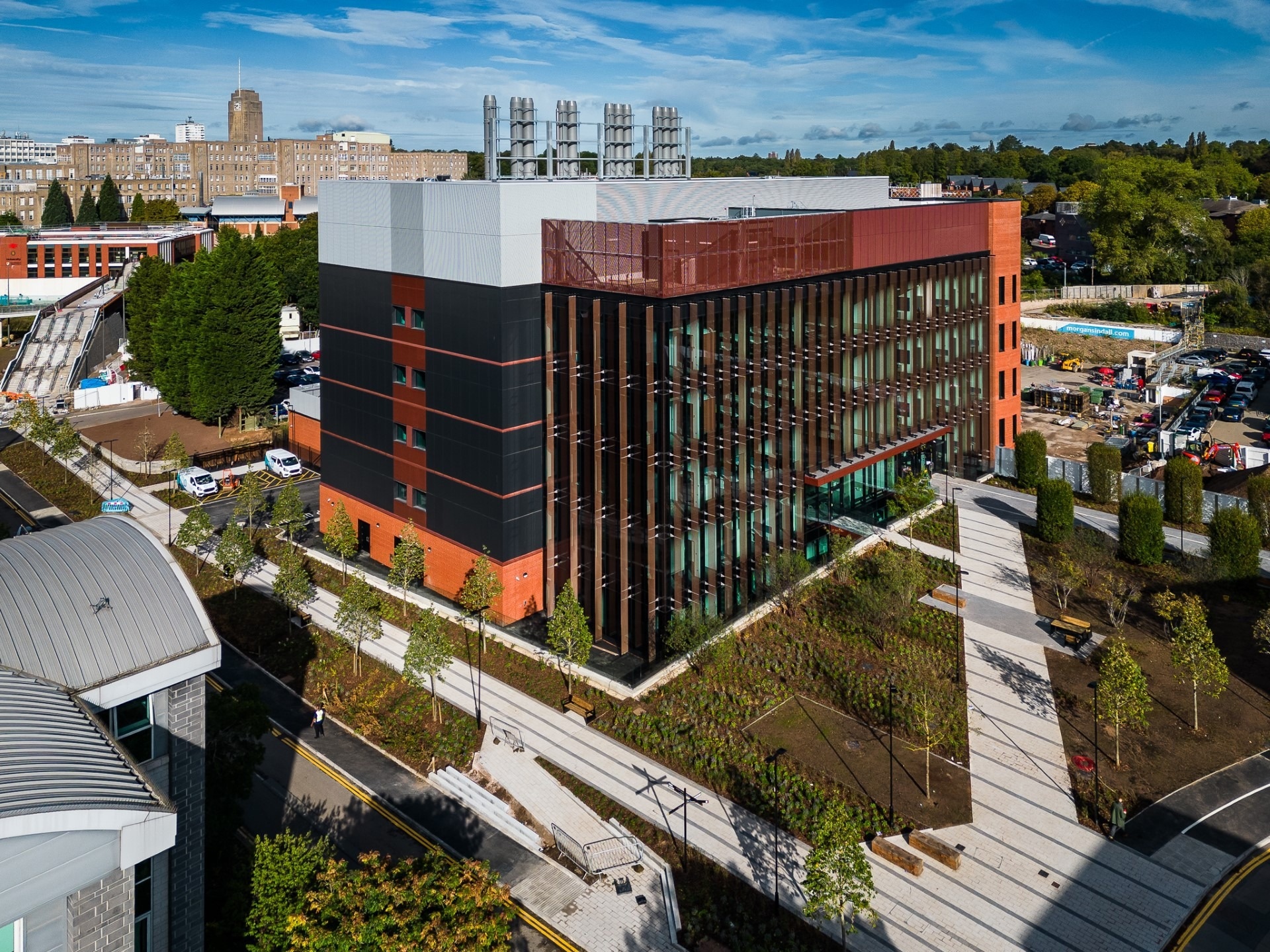Morgan Sindall Construction has completed works on a new Molecular Sciences research facility at the University of Birmingham (UoB).

Image Credit: Morgan Sindall Construction
This state-of-the-art building will serve as a hub for the School of Chemistry, whilst providing facilities for the School of Geography, Earth, and Environmental Sciences. The building will strengthen the University’s research capabilities in the chemical, environmental and biomolecular sciences, fostering an environment for carrying out world class research.
Procured via the university’s own framework, Build Higher, the Molecular Sciences Building is a testament to the University’s commitment to advancing research capabilities. Designed by Associated Architects, the 11,230 sq. m facility encompasses a blend of primary and specialist laboratory spaces, offices, tutorial space, flexible collaborative spaces, and a new two-storey energy centre.
This project marks the third collaboration between the University and Morgan Sindall, following the tier one contractor’s delivery of the Collaborative Teaching Laboratory and the University House Business School extension.
Throughout the project, the Morgan Sindall team have been able to use a wide range of technological capabilities through its Intelligent Solutions approach. This includes the use of a Building Information Management (BIM) tool and Gamma AR which allows the team to navigate the site through augmented reality – enabling seamless operations and real-time updates to the model.
Using clash detection software and Leica laser scanning, the project team ensured precise positioning of each element to within 50mm accuracy by aligning the data directly with the BIM model. Additionally, with the use of Oculo, a cutting-edge 360-degree imaging tool, the team virtually ‘walked’ through the site, enhancing collaboration.
As a research facility, creating a low-carbon building presented unique challenges owing to the nature of the site’s core research activities. Morgan Sindall’s in-house CarboniCa tool played a pivotal role in developing a comprehensive carbon model. This enabled real-time analysis of both embodied and operational carbon, leading to well-informed decision making in line with the University’s net-zero targets – saving 350tn of carbon.
Additionally, the team opted for raft foundations over pile foundations, adding to vibration control and reducing concrete consumption during construction. The Molecular Sciences Building aims to achieve BREEAM ‘Excellent’ rating upon completion.
Throughout the Molecular Sciences Building project, Morgan Sindall generated a significant amount of social value for the local area. In total, £34m in social value was created through initiatives such as creating careers in construction by offering 11 workless job starts, 1,105 apprentice weeks and 12 work experience placements.
As a part of Morgan Sindall’s dedication to the area’s community and economy, the team donated £11,294 to charity, including £2,000 worth of clothing, toiletry essentials and sleeping bags for St Basils, a local homeless charity.
The team also volunteered 312 hours to support Birmingham Hospice. The Morgan Sindall team were also able to secure 64% on local spend, and a 56% spend on SMEs.
Richard Fielding, area director for Morgan Sindall in the Midlands, said: “The UK is at the global forefront of scientific research and facilities, and through the completion of this Molecular Sciences building, the University of Birmingham has put the country even more on the map. I know the team and I are proud to be able to contribute to STEM in such a way, and the subsequent expertise we have been able to implement working hand in hand with the University to deliver the highest-level facility possible.
“As a technically challenging project, this has been a celebration of our Intelligent Solutions approach and the team has worked hard to ensure that our delivery was timely and without error. Within that, the trialling of new AR technologies has been an immense success and we look forward to continuing its usage in upcoming projects.
“It was great working closely with the local community to provide one of our most successful social value projects, which we’re very proud of. It has been a tremendous privilege to continue our work with the University, and we look forward to any future collaborations.”
University of Birmingham Director of Estates, Trevor Payne comments; “The Molecular Sciences Building is an important development for the University, not only in terms of furthering our research but also reflecting our ambition to create a sustainable campus for the future. The building has been designed specifically to facilitate greater collaborative working between the University colleagues, industrial and academic partners. We look forward to opening this incredible new research space.”